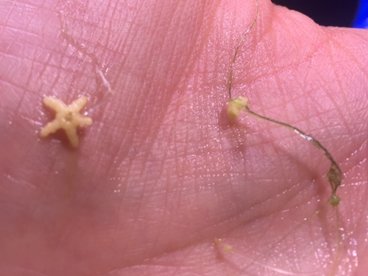
Aquatic weed, starry stonewort, creeps across US
An aquatic weed is creeping across the Great Lakes region that grows really fast and is very hard to kill.
Scientists don't know a lot yet about starry stonewort, but they're hurrying to find out more. The plant, which forms dense surface mats in lakes, first turned up in North America in 1978 in the St. Lawrence River in New York state. Researchers think it probably arrived in ballast water from ships entering the Great Lakes.
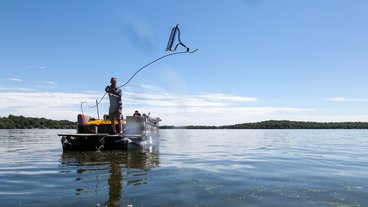
Local View: Systemic approach is needed to avoid poisoning our water
What should we do to keep Minnesota’s waters clean and healthy? We are not going to convert agricultural or urban regions back to prairie or forest. We cannot put the aquatic invasive species genie back in the bottle. Improving Minnesota’s waters should involve carefully chosen investments and trade-offs.
We can accept the status quo; we can fix our lakes, streams, wetlands and aquifers; or we can learn to live with degraded water. These are rational, viable options and should be part of a comprehensive solution.

Q&A: DNR commissioner is proud of inroads made
Tom Landwehr, a waterfowl biologist who was hired by the state Department of Natural Resources in 1982, is entering his sixth year as the agency’s top gun. He sat for an exclusive interview this week, where he was proud of prairie restoration, regretful of his own late arrival to walleye and deer management issues, worried about groundwater pollution and determined to build a DNR office on the shores of Lake Mille Lacs. Here’s a condensed version of what he said:
Q: What’s been your signature achievement so far?
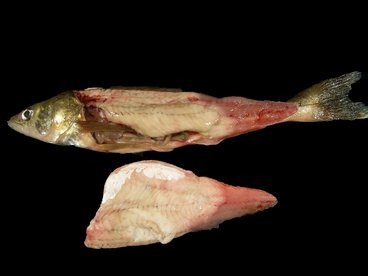
U studies spreading fish parasite in Minnesota lakes
After more than a decade, University of Minnesota researchers have renewed studies on a malicious fish parasite that slowly dissolves muscle cells, ruining the fillet.
The parasite, called Heterosporis, is commonly found in north-central Minnesota and northeastern Wisconsin, where it has befuddled anglers who catch fish and find they have a freezer-burnt appearance. Yellow perch are some of the most widely affected by the disease, which turns the fillet opaque white instead of translucent and is often observed only after it has been cleaned.
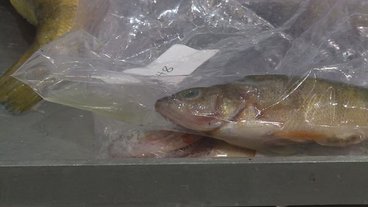
Muscle-dissolving fish parasite infects 26 Minnesota lakes
A terrifying fish parasite in Minnesota has now spread to 26 lakes in the state and 15 different species, according to researchers from the University of Minnesota. The parasite is called heterosporis, and the effects it can have on fish are rather grisly.
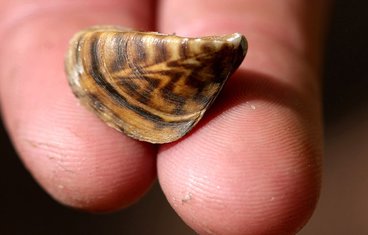
DNR begins zebra mussel pilot project treatment
The Department of Natural Resources is starting to initiate pilot projects aimed at treating recently discovered, small infestations of zebra mussels on Minnesota lakes after success was shown in one test project.
The first pilot project is the treatment of Ruth Lake near Emily in Crow Wing County. The Ruth Lake infestation was confirmed in July after a young snorkeler found a single zebra mussel under a rock. Subsequent surveys of the lake revealed about two dozen zebra mussels, all in the same small area. The pilot project treatment, using the pesticide Earth Tec QZ in a 3.4-acre section of the lake, will be paid for by the Ruth Lake Improvement Association.
Pilot projects are a new process designed by the DNR and the Minnesota Aquatic Invasive Species Research Center (MAISRC) at the University of Minnesota.
The effective treatment of a small, isolated zebra mussel infestation in Christmas Lake in the western suburbs of the Twin Cities in April and May provided important groundwork for the new pilot project process. Shortly after the Christmas Lake infestation was confirmed, a combination of experimental, permitted pesticides was applied with the most recent dive survey Sept. 30 showing no zebra mussels in the lake.

Christmas Lake holds off zebra mussel spread
A west metro lake that’s become the testing ground for local agencies and the state of Minnesota to see if new measures will work at killing zebra mussels is holding off the invasive species.
As the boating season has come to a close, Christmas Lake hasn’t let up its efforts to keep the small lake next to Lake Minnetonka free of the aquatic invasive species after costly and groundbreaking efforts to rid the lake of mussels over the last year.

U Of M Researchers Study Nasty Parasite That Dissolves Fish
University researchers say a parasite is attacking fish in Minnesota and Wisconsin.
Nick Phelps’ team at the University of Minnesota is trying to learn more about the parasite, which dissolves the muscles of fish. He says 26 lakes are known to have been infected in Minnesota since 1990, with 15 species affected.
Phelps says it’s a nasty disease, and yellow perch are some of the most commonly affected fish. He says the parasite basically destroys the filet, so you wouldn’t want to eat it. Fortunately, people aren’t known to be susceptible to this disease.
The parasite is called Heterosporis. Infected fish have the appearance of freezer burn.
Phelps says it’s not clear how it’s spreading or how prevalent it is. Fish in 16 Wisconsin lakes have also been affected.

Deadly parasite dissolving MN lake fish an urgent priority for U researchers
A gruesome parasite is killing fish in multiple lakes in Minnesota, and university researchers are urgently trying to find its cause and stop its spread.
Cases of heterosporosis have been confirmed in 26 lakes in Minnesota, affecting 15 species, since it was first reported in Lake Bemidji in 1990, according to the University of Minnesota’s Aquatic Invasive Species Research Center.
It’s been found in well-known lakes including Mille Lacs, Vermillion and Leech, plus Lake Superior.
Researchers have been working on the pathogen for several years, but concerns over its spread have now made it a high priority, particularly given its impact on “economically and ecologically important” species, including yellow perch and walleye.
The parasite has a devastating effect as it dissolves fish muscles, making it look as though the muscles have been cooked or “freezer-burned,” so any infected fish caught by anglers are not going to make much of a meal.
KARE 11 reports infection rates in affected lakes can be as high as 30 percent. It is passed by fish eating the spores or flesh from another infected fish.
“I am concerned,” researcher Nick Phelps told the TV station. “As far as diseases go, this is a nasty one,” but he added that people aren’t known to be susceptible to this disease.
Anglers have been warned to ensure their boat and equipment is cleaned if they are moving between lakes, to prevent possible spread of the parasite.
The U has said that field and lab research is underway to estimate how prevalent the disease is in Minnesota’s “important fish populations,” as well as its potential long-term impact.

Parasite attacking Minnesota fish
ST. PAUL, Minn - Researchers at the University of Minnesota say a parasite is attacking fish in Minnesota and Wisconsin.
Nick Phelps and his team of researchers are trying to find out what is causing a disease that dissolves the muscles of fish. The research is taking place at the Minnesota Aquatic Invasive Species Research Center on the U of M campus. He said there are 26 known infected lakes in the state, with 15 species.
"Some of the most commonly affected fish are yellow perch," Phelps said. "I am concerned. As far as diseases go, this is a nasty one. People aren't known to be susceptible to this disease. The parasite basically destroys the filet and you are not going to want eat it."
For example, infected fish have the appearance of freezer burn. It is called Heterosporis. If you suspect that a fish has Heterosporis or any other disease you can report the threat, and see a list of infected lakes, here.
Currently, Phelps said it is not clear how the disease is spreading. Fish in Wisconsin have also been affected. Currently, there is no way to measure the economic impact.
"When you have lakes that have 30-percent (of the fish population) infected you can imagine how big of an impact this may have to fisherman trying to catch the fish," he said. "When you have something that liquefies tissue and you don't know a lot about the biology and the ecology of it that is cause for concern."
http://www.kare11.com/story/news/2015/10/07/parasite-attacking-minnesota...
